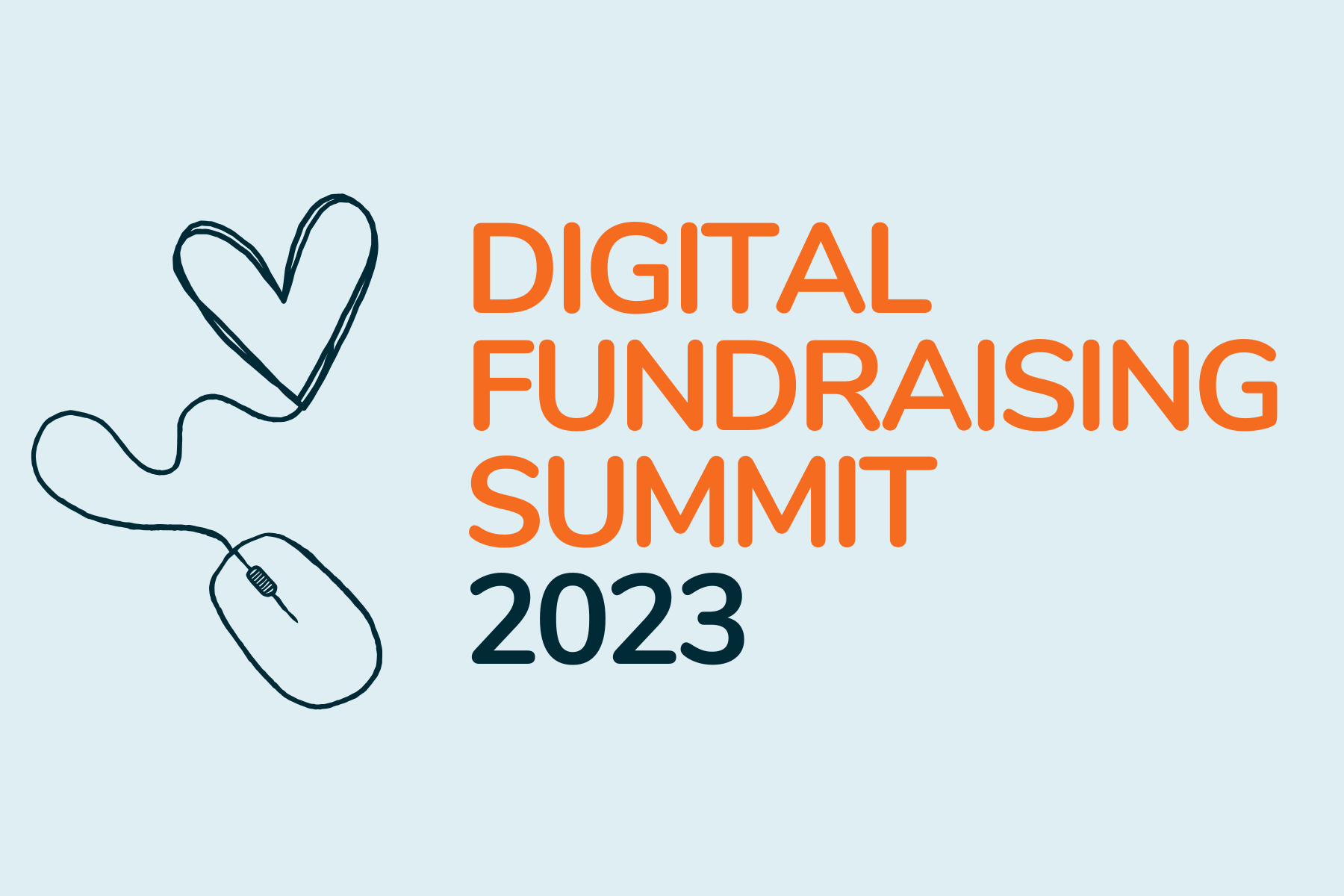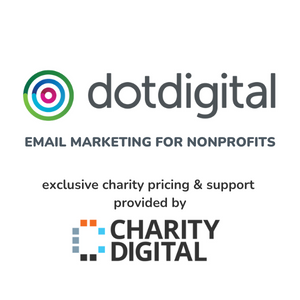Insights
INSIGHTS
All Topics
Fundraising facts you need to know in 2025
We explore the facts that define fundraising in 2025, including how the cost-of-living crisis has affected donors, the latest trends in fundraising events, the ways fundraisers are embracing digital, and so much more
Fundraising doesn’t exist in a vacuum. Fundraisers have to be plugged into the latest fluctuations in the economy, react to changes in the zeitgeist, and be mindful of ever-evolving forecasts for the future.
The sector has been changing, with one in five charities in 2024 saying they had to cut back on the number or scope of services they offer due to rising costs, recruitment difficulties, and lack of skills. At the same time, the UK fell out of the Top 20 most generous countries in the world, with fewer people helping strangers, giving money, and volunteering for good causes. But there is also a sense of optimism as the public begins to recover from the cost-of-living crisis, and charities earn by far the most public trust compared to other institutions.
To help fundraisers tackle the challenges and make the most of opportunities in the sector today, we have constructed an overview of fundraising facts in 2025, looking at how our changing economy is affecting donors and charities alike, as well as exploring trends in digital fundraising, grant funding, fundraising events, and more.
Skip to: Facts about fundraising in 2025 and the economy
Skip to: Facts about digital fundraising in 2025
Skip to: Facts about fundraising events in 2025
Skip to: Facts about methods of giving in 2025
Skip to: Facts about charity donors in 2025
Skip to: Facts about legacy giving in 2025
Skip to: Facts about grant funding in 2025
Facts about fundraising in 2025 and the economy
The cost-of-living crisis, which began in 2021, has affected charity service users and supporters alike and has presented new challenges to charity fundraisers. In 2024, Enthuse’s Summer ’Donor Pulse’ report reflected that "the cost of living may be slowly edging away from the front page, but it still casts a long shadow over the public’s collective bank accounts."
The impact of the cost-of-living crisis was experienced as a "double whammy", with inflation meaning a rise in demand for services, while services became more expensive to run. This meant that donations were more important than ever.
When asked in 2023, 60% of the UK public found it harder to give to charity than they did six months prior, according to Enthuse’s Spring 2023 Report. In all regions of the UK, more people found it harder to give than found it easier to give.
In 2024, we saw this improve, with more than half of people polled in the summer (56%) feeling either the same or better off than they were. This is not yet translating into increased charity donations, however Enthuse predicted that this may change in the final months of 2024, with 78% of the public intending to donate in the near future.
In addition, both charities and the public would like the government to direct funding into the charity sector.
On June 21 2023, the Small Charity Week team sent an open letter signed by over 900 organisations to the then UK Prime Minister Rishi Sunak, calling for more financial support to charities and the voluntary sector.
The National Council for Voluntary Organisations also made a statement about the Spring Budget 2023: “We’re…raising concerns that there still isn’t enough local government funding to cover the cost of charities delivering public services. We don’t think planned increases in departmental budgets will be enough to keep pace with inflation.”
In the context of the 2024 General Election, Enthuse found that 83% of the public think the government should give financial support to charities, while around half (48%) believes that the government should increase its funding to charities because there is currently a greater need for charities’ work as a result of the cost-of-living crisis.
Facts about digital fundraising in 2025
Check out the Digital Fundraising Hub!
Digital fundraising has been drastically rising since the beginning of the COVID-19 pandemic when restrictions to all in-person interaction also meant a fall in cash and in-person charity giving.
According to CAF, 51% of charity supporters used cash to donate before the pandemic (2019), which fell dramatically to 29% in 2021. In 2022, this rose to 35%, which is still far from pre-pandemic levels.
Giving to charity through a website or app has increased from 20% before the COVID-19 pandemic to 26% in 2022, according to CAF.
Enthuse’s ‘Donor Pulse Report: Spring 2023’ found that 44% of the UK public donated to charity using online giving despite a fall in overall donations. The demographic of online givers skews towards the younger generations, with 56% of under-40s giving online compared to 35% of over-40s.
Despite the popularity of online giving, the 2024 Charity Digital Skills Report found that almost half of charities (41%) said they were “poor” at digital fundraising, and a further 25% don’t fundraise digitally. Going into 2025 however, over half (52%) of charities said that increasing digital fundraising was a priority, making it the second greatest digital priority of the sector this year.
Facts about artificial intelligence and fundraising in 2025
Check out the Artificial Intelligence Hub!
Innovations and mainstream access to artificial intelligence (AI) technologies such as ChatGPT have made people in the charity sector and beyond excited by the possibilities of the technology. On the other hand, some are concerned about the ethical and practical risks and limitations of artificial intelligence in the charity sector.
The Charity Digital Skills Report 2024 found that 61% of charities are currently using AI in their day-to-day work or operations. Interestingly, this increases significantly among grant-making trusts and foundations, 83% of whom are using AI tools.
The report found that of those using AI, a small proportion (19%) are using the technology for grant fundraising, such as writing bids and researching funders, with small charities being more likely to do so than large charities.
Facts about fundraising platforms versus charity websites in 2025
According to CAF, 26% of donors gave to charity through a website or app in 2022.
In their ‘Donor Pulse Report: Spring 2023’, Enthuse found that there was an increase in the number of donations going through charities’ own websites as opposed to through fundraising platforms. The report found that these direct website donations were worth 22% more than those made through consumer giving platforms, with the average direct donation increasing from £32.25 to £41.37.
Enthuse draws a link between the number of people donating directly through charity websites and the number of people who remember the name of the charity they last donated to, stating that donors are 38% more likely to remember the name of a charity if they donate directly.
This is because consumer giving platforms do not make the charity’s branding clearly visible, they state – with a total of 49% of donors giving this as the reason why they can’t remember the name of the last charity they gave to.
Facts about gaming and streaming fundraising in 2025
“Gaming for good” fundraising has been on the rise for a number of years. The UK games industry is worth £7 billion, offering an opportunity for fundraisers to engage gamers towards a good cause.
Georgia Paton, Gaming and Streaming Manager at the British Red Cross, told us about a shift towards other kinds of online streaming in 2023. For British Red Cross’s Ukraine Appeal, one fundraiser streamed himself working in his forge all day for a week, others making glass art, others making miniature buildings, and more.
She said: “when people are fundraising on stream, people donate when the person is talking rather than when they’re playing the video game. So, we’ve got a new buzzword: the creator economy”.
The British Red Cross’s gaming and streaming strategy was put in place during COVID-19, meaning that the charity has been able to utilise the income stream to fund its responses to new disasters and conflicts as they have arisen.
Other charities embracing gaming and streaming fundraising in 2023 include the animal charity Blue Cross, the mental health charity Mind, and the health charity Teenage Cancer Trust.
The national movement of local charities, End Youth Homelessness, has produced a Gaming for Good 2023 Fundraising Pack, which may be useful for other charities to take a look at when designing their own gaming and streaming fundraising events.
Find out more in our complete guide to livestream fundraising.
Facts about online charity shops in 2025
According to the Charity Retail Association, charity shops provide their parent charities with £363 million per year, and employ 26,000 people in full time positions, in addition to thousands of volunteers.
In 2024, there are more than 11,200 charity shops across the UK, but online charity shops are also thriving. These are hosted on charity websites, as well as second-hand retail websites such as eBay, Depop, ASOS Marketplace, and Vestiaire Collective.
In 2023, Insider Intelligence predicted that 20.8% of all retail purchases would take place online. In 2022, the Office for National Statistics found that U.K. residents spent substantially more than they did before the COVID-19 pandemic.
However, online charity shops are unlikely to replace in-person charity shops in the near future. According to Robin Osterley, Chief Executive of the charity Retail Association, the vast majority of sales in 2024 are still made through physical stores.
Trends we could see in 2025 include charity pop-ups and charities working with fashion brands.
Find out more in our complete guide to charity shops.
Facts about fundraising events in 2025
In 2024, over half (53%) of charities expected to see income growth from fundraising events and activities, according to Enthuse.
Small community events, such as bake-offs and pub quizzes were the most commonly planned fundraising activity in 2024, with 78% of charities polled by Enthuse planning these types of events. Meanwhile 70% planned to fundraise through mass physical events, including those organised in-house and by external organisers like London Marathon Events and Great Run.
Interestingly, Enthuse reported in 2023 that all age groups want to get involved with fundraising events, but that Gen Z are most enthusiastic (61%), followed by Millennials (60%). Overall, 61% of under-40s expect to attend a charity event in 2023 while 31% of over-40s expect to attend.
The most popular fundraising events among all age groups of the public are those that also aid attendants’ personal wellbeing, those that are smaller, and those that involve socially driven activities (47%). This is followed by exercise challenges which contribute to health goals (45%), large group events such as fun runs and walks (30%), and distance races such as marathons and half-marathons (16%).
Women were found more likely to want to attend smaller fundraising events associated with personal wellbeing and social activities while men were more likely to want to attend exercise challenges, large group events, and distance races.
In 2022, the biggest mass-participation fundraising event was Cancer Research U.K.’s Race for Life, which raised £22.4 million. Next biggest was Macmillan’s World’s Biggest Coffee Morning, which raised £15.6 million, followed by Movember, which raised £12.5 million.
The national fundraising event Comic Relief raised over £34 million in March 2023 to support people struggling with the cost-of-living crisis, food poverty, mental health issues, and homelessness.
High profile fundraising events in 2024 included Comic Relief’s Red Nose Day, The London Marathon, and the NSPCC’s Number Day.
Facts about motivations and barriers to fundraising events in 2025
According to Enthuse, the top three motivating reasons for people to attend fundraising events were found to be taking part in an activity as a team, information on the cause the charity is helping, and information on how the charity spends its income.
Specific motivating factors for distance running events were when the charity provided help training for the event and taking part in a famous event. Distance runners were also more interested than average in merchandise and rewards and receiving help in setting up an online fundraising page.
The power of celebrity involvement was also powerful among potential distance runners. While 22% of the public said they would donate to a cause and 19% would talk about the cause on social media if they saw a well-known personality getting involved with it, 39% of potential distance runners said the same. 32% of distance runners also said the involvement of a celebrity would influence them to actively raise money for the cause.
A range of barriers were stated as barriers for distance events, with almost half citing a lack of fitness (55%), over a fifth citing that they are not sporty (22%), almost a quarter stating that they don’t have the energy to train (24%) and 23% stating that they don’t have time to train.
Enthuse highlights the fact that although Gen Z is much more interested in distance events than other age groups, more than one in five in this age range (21%) say that the fact that none of their friends run, cycle, or swim is a barrier to taking part.
Facts about methods of giving in 2025
It seems methods of asking for donations are still removed from in-person interactions with charities opting for more virtual methods of communication.
CAF reports that people were most commonly asked to donate via television (25%), followed by being asked to donate via social media (23%).
The number of people being asked to donate on the street rose from 15% in 2021 to 19% in 2022, however this is still not as many as were asked this way in 2019 before the COVID-19 pandemic (34%).
19% of people were also asked to donate to a charity by post, and 17% were asked to donate via email. 12% were asked for sponsorship by friends or family members in 2022, which is a decrease from 14% in 2021 and 19% in 2019. 10% were asked to donate through door-to-door collection, which although up from last year (8%) is still down from 2019 (13%).
Only 5% were asked to donate at work, and 5% were also asked to donate at a charity event, with both showing a decrease from previous years.
According to CAF, the proportion of people donating to charity by buying goods or a raffle or lottery ticket has been slowly decreasing since 2016. Although 2022 showed an increase in 2% from the year before, this has still not recovered to pre-pandemic levels.
Facts about charity donors in 2025
Research from the Benefact Group and the Centre of Economics and Business Research suggests that donating to charity leads to greater life satisfaction and more positive mental health outcomes.
But the number of people donating dropped 5% between 2022 and 2023, according to Enthuse. The drop is seen across all age groups but those in lowest income households have unsurprisingly been hit hardest in terms of the ability to give to charity.
Nonetheless, CAF found that during 2023, three quarters of people (40 million) in the UK supported charities.
Among this number, around 1 million were defined as "Super Givers", supporting charities by through all five activities of donating, giving goods, sponsoring, volunteering, and fundraising. Super Givers were more than twice as likely to be women, and most were older than 45.
In 2023, the number of regular donations to charities stayed stable at around 28% since Winter 2021. Half of people surveyed by CAF in 2023 said they give to charity “from time-to-time”, 15% said they rarely give to charity, and 6% said they never give to charity. Women were more likely than men to report frequent giving.
Frequent giving is also more likely the older a donor is, with two fifths (39%) of those aged 65 and over giving to charity regularly, compared to only one fifth (20%) of 16–24-year-olds. In line with this trend, 33% of 16–24-year-olds either “rarely” or “never” give to charity, compared to 10% of those aged over 65.
By region, the most likely to donate frequently are those living in the South West of the U.K. (31%), the South East (31%), and Wales (30%). In 2024, CAF tracked the UK’s generosity hotspots for the first time, revealing that some of the least affluent areas of the country are among the most generous.
Facts about how donors are giving to different charity causes in 2025
According to YouGov, the three most popular charities and organisations in 2024 are Alzheimer’s Research UK, Macmillan Cancer Support, and St. John Ambulance, meaning the most people had a positive opinion of these charities.
The CAF ‘U.K. Giving Report 2023’ found that the most popular cause for donations in 2022 was animal welfare. This was only overtaken in March and April by overseas aid and disaster relief, likely because of the war in Ukraine.
CAF found that in 2023, £800 million less went to overseas aid and disaster relief than in 2022 despite high-profile disasters and conflicts taking place around the world. Meanwhile, most other cause areas received similar support to previous years.
Enthuse’s ‘Donor Pulse Report: Spring 2023’ found that giving to overseas aid has doubled since Spring 2022, likely due to a shift in attention to the ongoing war in Ukraine and the Turkey-Syria earthquake on 6 February 2023. 47% of people surveyed by Enthuse said they had either donated or were planning to donate to the humanitarian disaster caused by the Turkey-Syria earthquake. CAF has since found that while there was a spike in donors in 2023, the average gift was not as high as it had been during the previous year.
When asked which causes they had donated to in the past four weeks in 2022, 28% of donors said they had donated to animal welfare, 23% had donated to causes related to children and young people, 21% had given to medical research, and 21% had given to overseas aid and disaster relief.
Animal welfare, children and young people, and medical research were all comfortably been the top three most popular causes between 2018 and 2022.
Women were found to be more likely than men to support animal welfare charities, children or young people charities, and food banks, while men were more likely than women to support religious organisations and military and veteran charities.
Donations towards hospitals and hospices have continued to decrease, according to CAF. While in 2017, 23% of survey respondents said they had given to this cause in the past four weeks, 16% said the same in 2022. Donations to support homeless people, housing, and refuge shelters have also decreased from 20% in 2019 to 16% in 2022 despite reports that homelessness is on the rise in the U.K.
Enthuse also notes that support for mental health charities has faced a sharp drop of 6% since last year, with 16% of those surveyed giving to the cause in 2023.
Donors older than 65 were more likely than younger respondents to support charities providing overseas aid and disaster relief, with 24% donating to these causes compared to 15% of 16–24 –year-olds.
Meanwhile, these donors aged between 16 and 24 were more likely to have supported causes relating to homelessness and shelters in the U.K. (24% compared to 15% of those over 65) and human rights (14% compared to 6% of those over 65).
Facts about the monetary value of charity donations in 2025
In 2022, an estimated £12.7 billion was donated to charities. This is an increase of £2 billion from 2021.
CAF has found a trend of “fewer people giving more”. That is, the rise in total donations in 2022 was because donors increased the amount they gave to charity, as opposed to a higher number of people donating. They note that this rise may be due to charity supporters adjusting their donations in line with inflation.
The median donation has stayed consistent over the past several years at £20. CAF notes that the value of this has eroded in real terms due to factors like high levels of inflation in the U.K.
In 2023, a record £13.9 billion was donated to charity: while fewer people donated compared to before the pandemic, some donors gave larger amounts.
Facts about legacy giving in 2025
According to Legacy Foresight, U.K. charities received a record £3.85 billion in legacy donations in 2022. The organisation forecasted that this income stream would remain resilient over the coming years despite economic challenges.
Research released in May 2023 commissioned by Remember a Charity has found that solicitors and professional Will-writers played an increasingly important role in legacy giving, with almost one in four (24%) of U.K. Wills handled by U.K legal advisors including a donation to charity. This has increased by 8% since 2014.
The research also identified the common barriers to legacy giving believed by these legal professionals: that people want to give their full estate to their family (83%), that they have difficulty choosing which charity or charities to support (38%), and that it may cause or lead to a dispute (38%).
In terms of the relationship between legal firms and charities, 56% of those who have acted or assisted in legacy giving said they found charities easy to deal with, while 13% said they didn’t find charities easy to deal with, with the top reason being too frequent communication from charities.
In 2024, Legacy Foresight identified opportunities for charities to better engage with legacy giving. These are improving internal communications, filling product gaps that are desired by supporters, and offering choice to honour supporters’ preferences when giving.
Facts about grant funding in 2025
Among other grant funding developments in 2024, Metropolitan Thames Valley (MTVH) launched the Molly Huggins Foundation, which will invest £75 million in community impact projects over the next decade to break down barriers that hold communities back.
Meanwhile, National Lottery Community Fund opened its UK Fund projects to help children and young people to use their voice to influence change.
In 2023, grant funders adapted to the changing economic climate and its impacts upon charities in the UK, thinking about how they can make their funding go further.
On 7 June 2023, The National Lottery Community Fund announced that from Autumn, it would be doubling the amount of funding available to grassroots projects from £10,000 to £20,000, and doubling the term from one year to two years.
It also invested £15 million on a new programme to connect communities in order to tackle some of the U.K.’s biggest social issues as well as investing £9 million to boost climate action.
The grant-giving funder John Lyon’s Charity announced that in response to the cost-of-living-crisis, it would aim to make its grants easier to apply for, larger, and available over a longer term. The charity gives grants to benefit children and young people in North and West London.
To attract new grant funding opportunities in 2025, see CAF’s resources, and IDOX’s exhaustive list of funding opportunities.
Sign up to our fundraising newsletter
Click above to receive our latest fundraising content straight to your inbox
Josie Sparling
More on this topic
Related Content
Recommended Products
Related Videos
Our Events
Charity Digital Academy
Our courses aim, in just three hours, to enhance soft skills and hard skills, boost your knowledge of finance and artificial intelligence, and supercharge your digital capabilities. Check out some of the incredible options by clicking here.


































